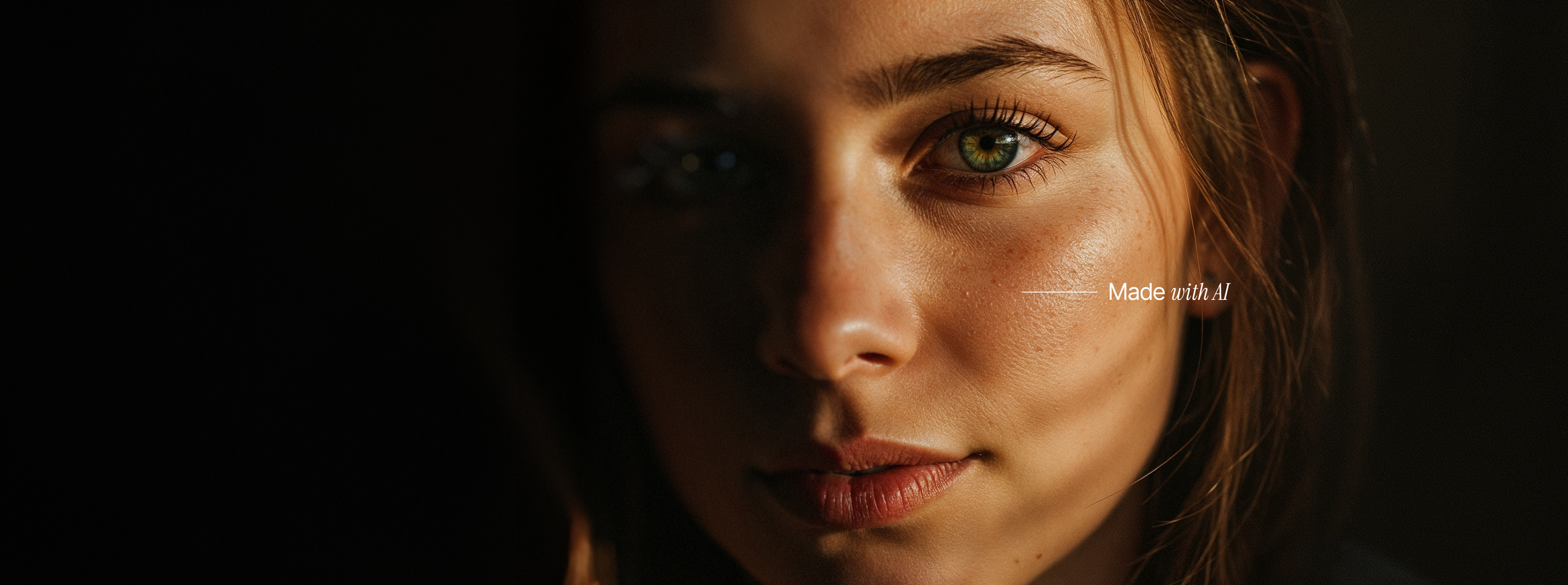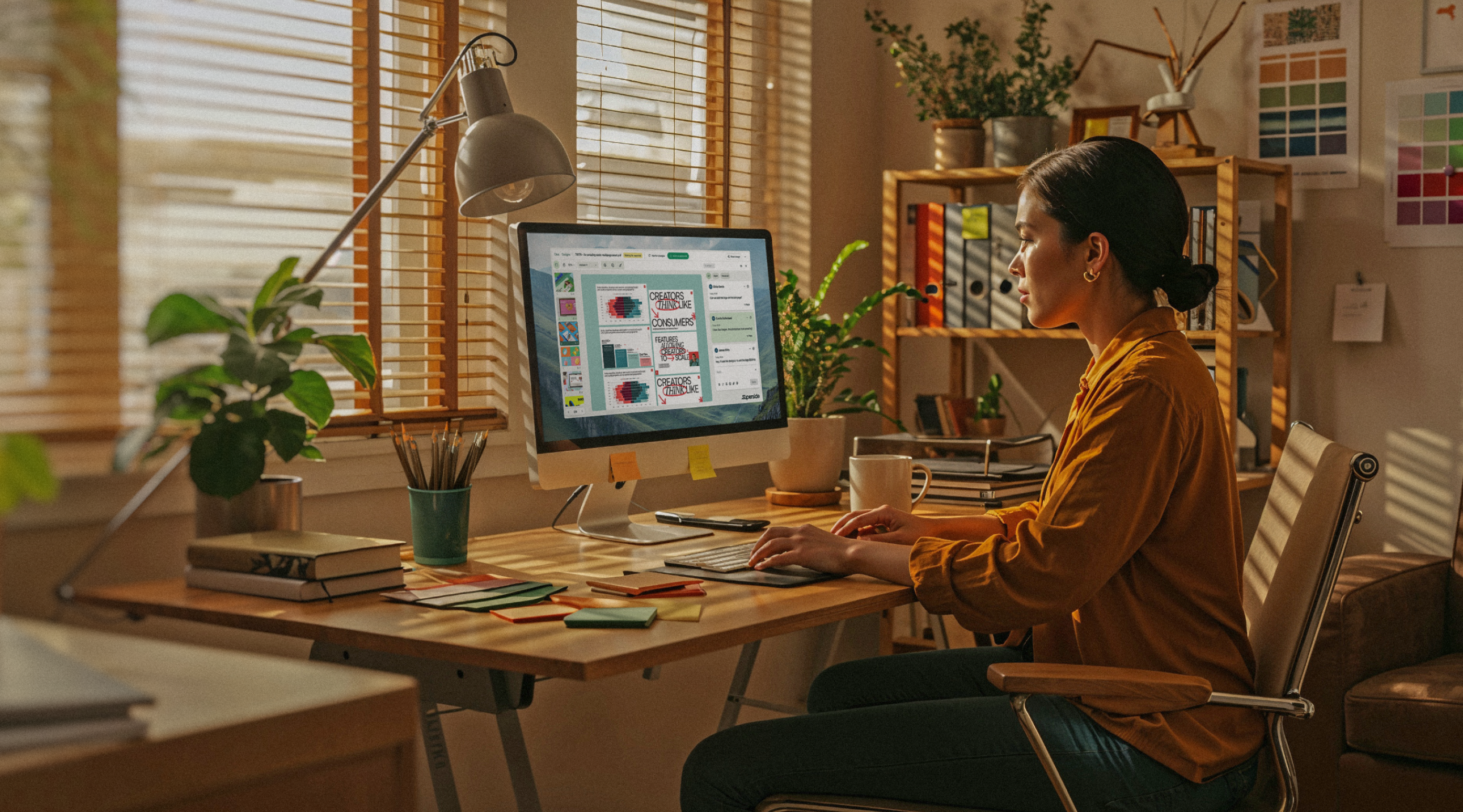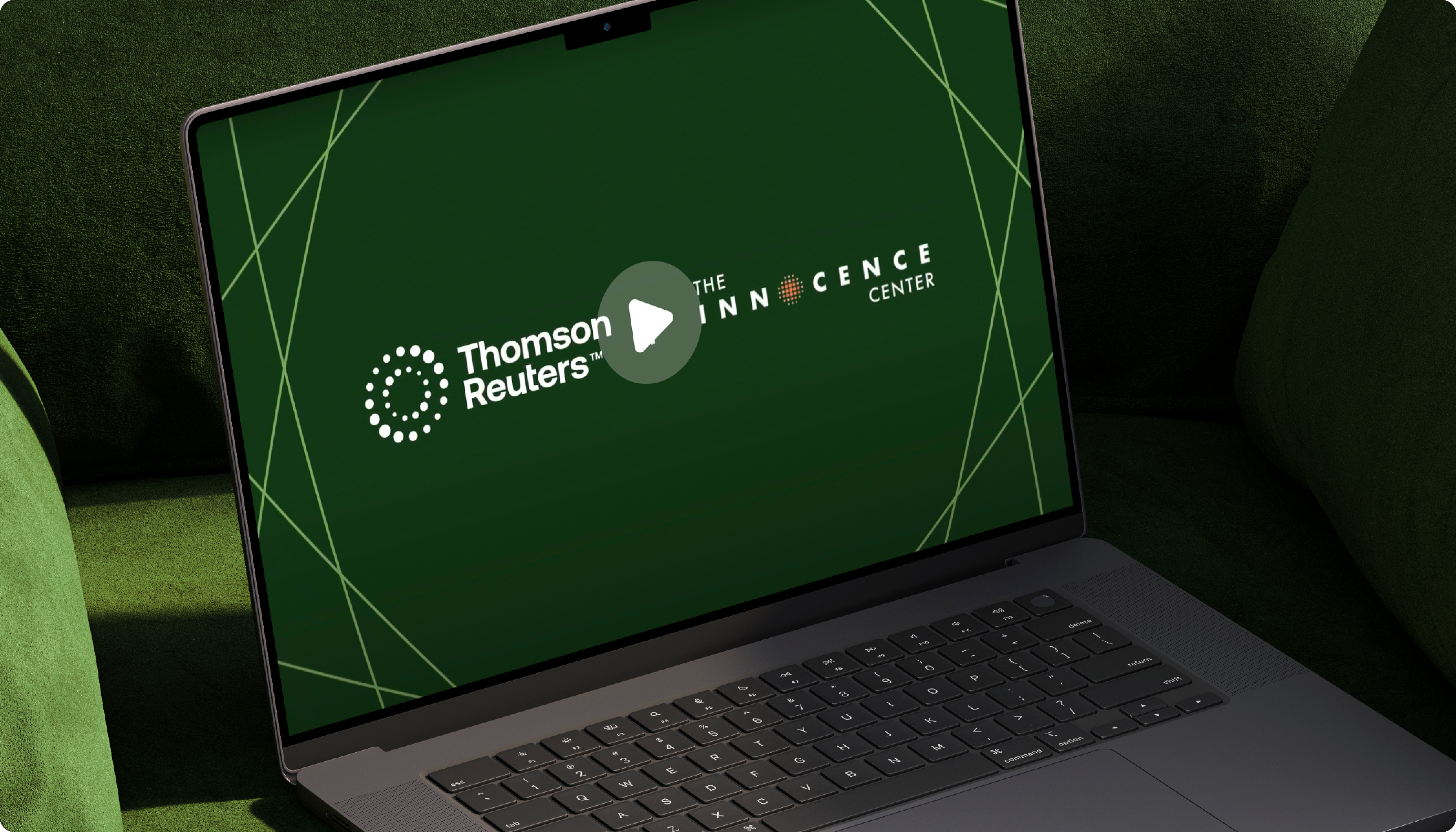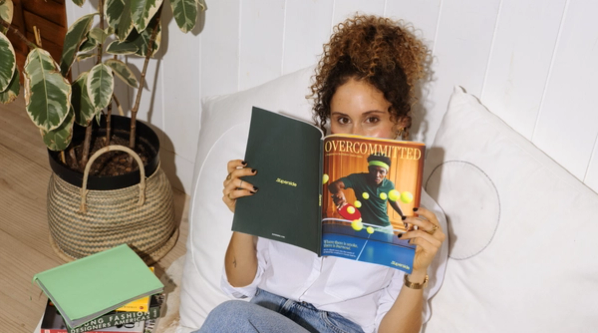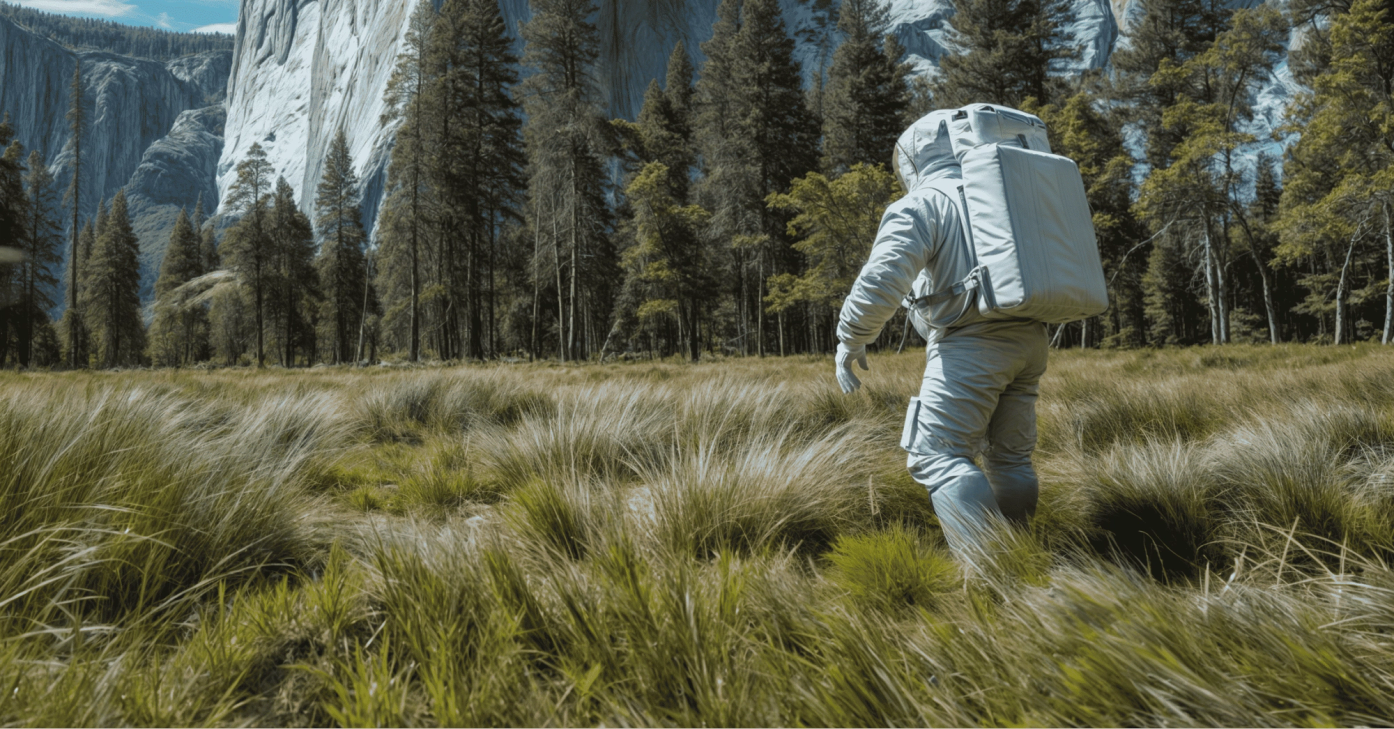How creatives can use AI to work smarter, not harder
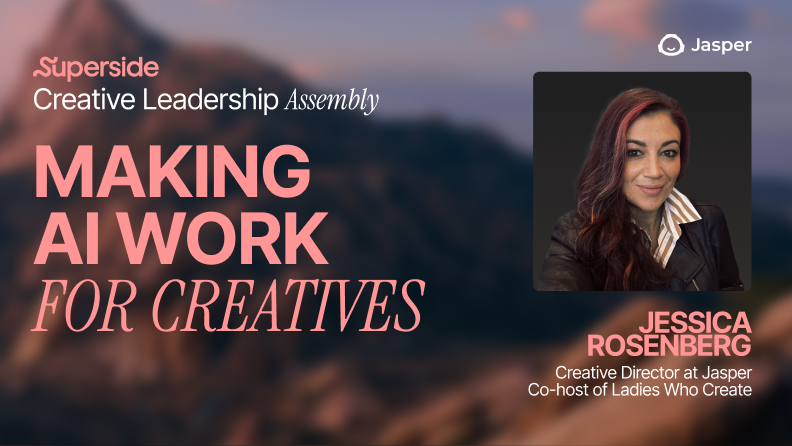
AI isn’t replacing creatives—it’s clearing the clutter so they can dream bigger and ship faster. Learn how Jasper's Creative Director, Jessica Rosenberg is using AI to move faster, boost quality and finally make space for big, bold ideas.
In a world increasingly powered by artificial intelligence, creatives might wonder: is AI a threat to creative authenticity—or a catalyst for it?
For Jessica Rosenberg, Creative Director at Jasper, the answer is the latter. Rosenberg lays out a clear, human-centered framework for embracing AI in the creative process. Her philosophy isn’t about replacing human ingenuity—it’s about amplifying it.
To us, the AI empowered creative team means we're not just using AI to move faster. We're using it to think a lot bigger than we've ever been able to before.
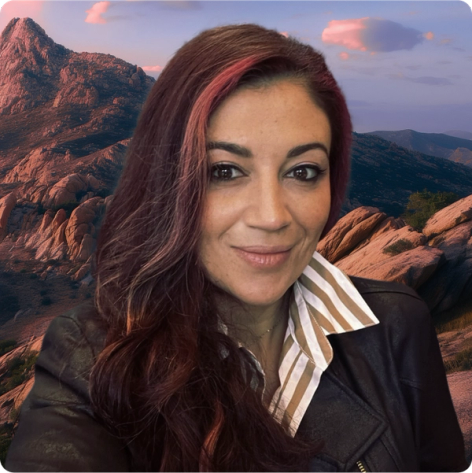
Read Rosenberg’s take on the tools that help creatives work smarter, get her framework and get ready to dive into the world of AI.
Before AI: Tedious tasks and limited bandwidth
The pressure is real, and growing. Creative professionals are feeling the squeeze. According to our recent Overcommitted report, 78% of creatives agree that creative demand is higher than their capacity to deliver, and 79% say they want to create bolder work, but they’re always racing against the clock.
These insights echo Rosenberg’s reflections: “We really spent more time executing than actually innovating.” It's a reality where creative ambition is high, but time and bandwidth are often in short supply.
Rosenberg reflected on the pre-AI creative workflow with candid humor. “A lot of our time got stuck on tedious tasks—resizing, background removal, endless rounds of feedback.” For creatives with tight resources, this situation is frustratingly familiar. Time and talent are siphoned into execution rather than innovation.
This imbalance, she explained, stifled creativity: “Brainstorming was limited, iteration was slower and we really spent more time executing than actually innovating.”
After AI: From sloth mode to rocket ship mode
AI changed everything. “After we started adopting a lot of AI tools, we're now able to brainstorm more ideas faster,” Rosenberg said. AI didn’t just speed things up—it made space for deeper, more strategic thinking.
So basically we went from sloth mode to rocket ship mode.

From generating content variations to rapidly prototyping concepts, her team at Jasper used AI to reallocate energy back into storytelling and strategy.
It's about using AI to open up new creative possibilities, to push boundaries of what we can concept design and execute while keeping the human storytelling emotion and strategy right at the core.

AI is about allowing creatives to prioritize what really matters, without taking away the human element. According to Rosenberg, “it's also about shifting energy away from tedious, repetitive tasks and putting that energy back into the parts of the work that really matter. So the ideas, the craft, the connections we're trying to build with people and our audiences. An AI-powered team is still very much human-led.”
Guiding principles for human-centered AI
Recognizing the whirlwind of new tools, Rosenberg’s team stepped back to develop intentional AI principles:
- AI is a co-creator, not a replacement. Human vision and judgment stay at the core.
- Efficiency without sacrificing craft. Speed shouldn’t compromise taste or quality.
- Human-led, AI-accelerated. Creatives lead with strategy; AI enhances output.
- Ethical and responsible use. Ownership, originality and brand integrity are critical.
- Experimentation is key. Stay curious, test often, refine constantly.
These guardrails reflect a growing industry consensus. According to the Overcommitted report, 96% of creatives agree that AI will help design teams work faster, and 93% believe it will improve the quality of their work. These stats reinforce Rosenberg’s core belief: AI isn’t a shortcut; it’s an enhancer.
Fast does not mean less quality or less tasteful... We need to make sure we're keeping the bar super high for quality.

Unlocking creative capacity with real-world tools
AI can mean a lot of things and the tools available are constantly changing. With so many new tools out there, where do you even begin? It’s all about experimentation and testing.
We like to stay curious, test new tools and refine our approach as we go.

While every team is different, Rosenberg illustrated how her team uses AI across the creative process:
- Brainstorming: Tools like Jasper, ChatGPT and Claude are used for ideation.
- Prototyping: Midjourney and Runway help with rapid visuals and motion concepts.
- Copywriting: AI refines concepts and drafts content aligned with brand tone.
- Tedious tasks: Tools like Figma’s background removal feature replace hours of work.
- Sound design: Tools like Suno generate custom audio compositions.
One standout example was a gallery-style landing page for a Jasper executive webinar. The team combined Midjourney, Runway and Webflow to produce an immersive, interactive page within a week.
Another project featured a launch video for Jasper’s Brand IQ product. They created a fictional sneaker brand, generated visuals with Midjourney, added motion in Runway and composed music with Suno. The entire process—from concept to execution—took just two weeks.
A process that mirrors human collaboration
Rosenberg equates AI collaboration to working with another human teammate:
- A human crafts a brief.
- AI supports ideation and moodboarding.
- The process loops—human to AI to human—until final tweaks.
- A human approves the final output.
It's very much human in the loop... the human's always the one making the final approval.

This iterative partnership ensures AI elevates the work without diluting the creative vision.
When AI isn’t the answer
Despite the benefits, Rosenberg doesn’t see AI as a one-size-fits-all solution. Some projects still need a human-first approach.
Sometimes AI does work and that’s great… and if not, then figure it out the old way.

This honest, flexible mindset keeps quality—and purpose—front and center. When a Midjourney mockup for a branded gift box wasn’t cutting it, she pivoted back to Photoshop. In fact, for Jasper’s upcoming rebrand—a human-first narrative—AI was only introduced at the implementation stage. “We wanted to make sure that the process in creating the brand was human first and foremost.”
This balance between high-tech and high-touch mirrors the reality facing many teams. Our recent AI adoption survey and Overcommitted report reveal that while 96% of creative leaders believe AI will speed up production, only 2% have fully integrated it. What’s holding them back? 60% cite a lack of AI expertise, and 52% say they simply don’t have time to figure it out.
Driving AI adoption inside organizations
Many teams face friction when trying to scale AI internally. Rosenberg shared practical strategies for creative leaders:
- Frame AI around impact. Speed, scale, ROI and time saved are more persuasive than the tech itself.
- Start small. One successful, low-risk pilot can open doors.
- Rally allies. Loop in stakeholders across legal, marketing, IT and leadership.
- Demystify usage. Tools like Slack channels and demo days encourage curiosity and peer learning.
Championing AI isn't actually about being the expert. It's about being the believer and the champion within your team.

To reduce resistance, she recommended storytelling as a strategy: highlight what AI frees people to do, rather than what it might replace. In Rosenberg’s experience, this often helps hesitant colleagues feel more empowered—and less threatened.
Navigating the legal and ethical landscape
As AI adoption grows, so do concerns around data security, ownership and brand integrity. Rosenberg advises proactively engaging with legal and information security teams and coming prepared.
I'll always bring a new tool to our head of security and have them vet it for me. I’ve been doing my due diligence first—around copyright, data usage and ownership. That way I can have a more informed conversation and better advocate for the tools as well.

For teams handling proprietary assets or brand-sensitive visuals, she also emphasized the value of using pro accounts or closed ecosystems that don’t feed outputs into public models. And in some cases, creating internal custom models trained on owned content can offer the best of both worlds.
Coaching teams through change
Resistance to AI often stems from fear, not logic. Designers may worry about their roles shrinking or losing creative control. Rosenberg addressed this directly:
These people that are taking five days to craft one email—my guess is they don’t want to be taking five days. It’s about helping them imagine what else they could do with that time.

She’s also mindful of maintaining brand consistency across teams. While her design team may use AI to create visuals, she draws a clear boundary: “Marketing teams should not be generating or creating their own imagery with AI tools.” Instead, templates and guardrails help preserve standards without stifling collaboration.
Final thoughts: It's still about the humans
AI is evolving—and so are creative teams. Rosenberg’s message is clear: by positioning AI as an extension, not a replacement, of human creativity, teams can move faster, think bigger and stay rooted in the emotional and strategic core of their work.
I think that we're still so early on in this AI journey as creatives that we have the opportunity to drive the story. So evangelize that and tell the story that we want to tell around how we use AI.

When teams use AI across planning, production and performance, the entire creative engine runs smoother. Whether it’s designing short-form videos faster, generating thousands of assets across languages or simply streamlining creative reviews, AI is helping teams shift from survival mode to scale mode.
The future of creativity isn’t AI-driven. It’s human-driven—AI-accelerated.
Tess is a Senior Content Specialist at Superside, where she crafts compelling content for SMBs and enterprise businesses. With over 10 years of experience, Tess has honed her skills writing for both B2B and B2C audiences, working across agencies and in-house creative teams. Her expertise spans industries, including international relations, tech, hospitality, and the music industry, where she has a knack for blending storytelling with strategic insights. When she’s not busy writing, you’ll likely find her curled up with a good book, binge-watching the latest Netflix obsession or hiking.
You may also like these
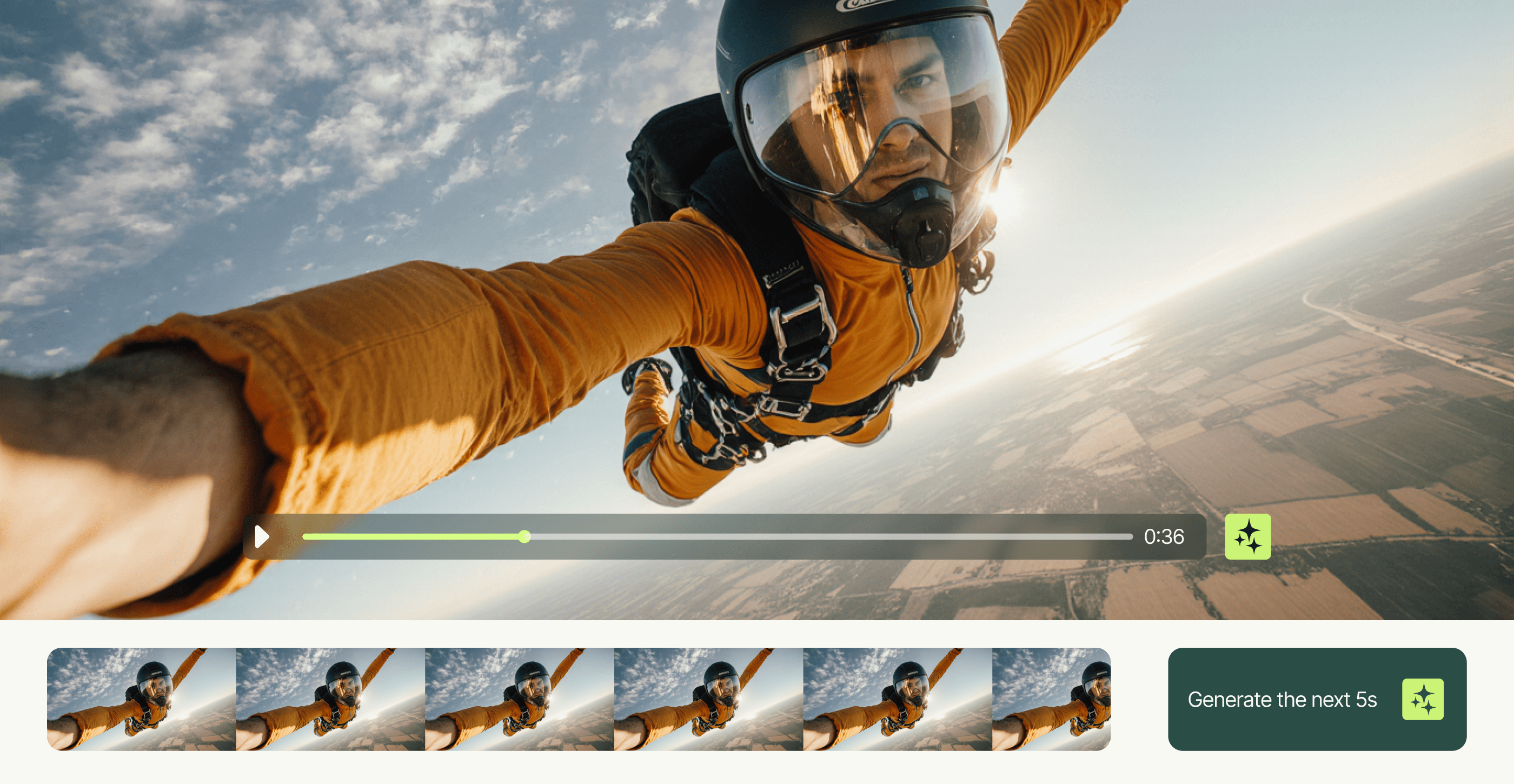
10 best AI video examples for inspiration in 2025
Video marketing continues to prove its impact. Viewers retain 95% of a message when they watch it on video, compared to 10% when they read it in text. And 89% of consumers love the format so much that they want even more branded video content.This demand has driven brands to explore innovative tools and production approaches over the last few years. AI has played a central role. In 2025, 41% of businesses used AI for video production, while another 19% planned to experiment with the tech in the near future.But the unprecedented demand for video means these tools alone aren’t always enough. In the enterprise environment, those who make a lasting impression deliver scale, consistency and fresh creativity. Many creative teams struggle to keep up without a strategic approach that combines AI excellence, top talent, streamlined processes and smart project management solutions.This article highlights exceptional AI-powered video examples crafted by Superside’s creative team, alongside standout work from other brands. We showcase work that tells powerful brand stories and unpack why each example matters for marketers who want to produce videos that win customers.
9 AI marketing campaigns pushing creative boundaries in 2025
AI is no longer just a novelty or a behind-the-scenes efficiency tool. The tech has matured to the extent that it’s shaking up marketing’s creative and strategic core.The world’s top brands don’t just use AI to automate tasks or deliver efficiencies. They use AI technology as a creative co-pilot that speeds up ideation, experimentation, personalization and more.In this article for enterprise marketing leaders, heads of creative, brand strategists and innovation leads, we explore nine AI-powered campaigns that demonstrate how the technology contributes to real-world marketing success. We start with two Superside examples, and then unpack seven more AI campaign case studies.Stick with us as we explore why today’s marketing teams should embrace AI, how to determine whether an AI tool belongs in your marketing stack, and why Superside should be your go-to creative partner.Why you should use AI in your marketing campaigns
AI meets expertise: Inside Superside’s formula for quality creative
Will it look too “AI-y?” Will it sound too “AI-y?”When it comes to AI, many creatives and marketers share a common concern: Will it compromise the quality of their work?In our latest guide, Inside Great Creative Partnerships, Superside’s Phillip Maggs, Director of AI Excellence, and Monica Romaniuc, Senior Product Marketing Manager, confirmed this fear is unfounded—provided you’re doing it right. From quick tips to caveats, they shared:Where AI can provide value across creative and marketing workflowsWhy legacy stacks are a caveat (but not a lost cause)

